
AI Videos
Text to Video for Educators: Boost Learning in 2025

Contents
- 1 Why Text to Video Matters for Educators
- 2 Top Text-to-Video Tools for Educators in 2025
- 3 How to Use Text to Video in the Classroom
- 4 Benefits of Text to Video for Remote and Hybrid Learning
- 5 Best Practices for Creating Effective Educational Videos
- 6 Challenges and Solutions in Adopting Text-to-Video Technology
- 7 Future Trends in Text to Video for Education
- 8 Case Studies: Text to Video in Action
Text to video for educators is reshaping how teachers deliver lessons and engage students in 2025. By converting written content into dynamic, visual formats, educators can create compelling learning experiences that captivate diverse learners. This innovative approach saves time, enhances comprehension, and fosters creativity in the classroom. With the rise of digital learning, tools that transform text into videos are becoming essential for modern educators. In this article, we’ll explore the benefits, tools, strategies, and future trends of using text-to-video technology in education, ensuring you maximize its potential to enrich teaching and learning.
Why Text to Video Matters for Educators
The shift to digital education has accelerated the need for engaging teaching methods. Text-to-video technology allows educators to transform static lesson plans into vibrant, multimedia content that resonates with students. Here’s why it’s a game-changer:

Enhancing Student Engagement
Videos capture attention more effectively than text alone. Studies show that 65% of students are visual learners, making video an ideal medium for delivering complex concepts. By using text to video for educators, teachers can create short, impactful clips that hold students’ interest and improve retention. For instance, a history lesson about ancient civilizations can come alive with narrated visuals, animations, and sound effects, making abstract ideas tangible.
Catering to Diverse Learning Styles
Every classroom includes students with varied learning preferences. Text-to-video tools allow educators to present information visually, audibly, and interactively, addressing visual, auditory, and kinesthetic learners simultaneously. This inclusivity ensures no student is left behind, as videos can incorporate subtitles, animations, and interactive elements to suit different needs.
Saving Time for Educators
Creating engaging content from scratch can be time-consuming. Text-to-video platforms streamline this process by automatically converting scripts or lesson notes into polished videos. Teachers can input their text, select templates, and generate professional-grade videos in minutes, freeing up time for lesson planning and student interaction.
Top Text-to-Video Tools for Educators in 2025
Several platforms empower educators to create videos from text effortlessly. Below, we highlight the best tools available, their features, and how they support classroom needs.
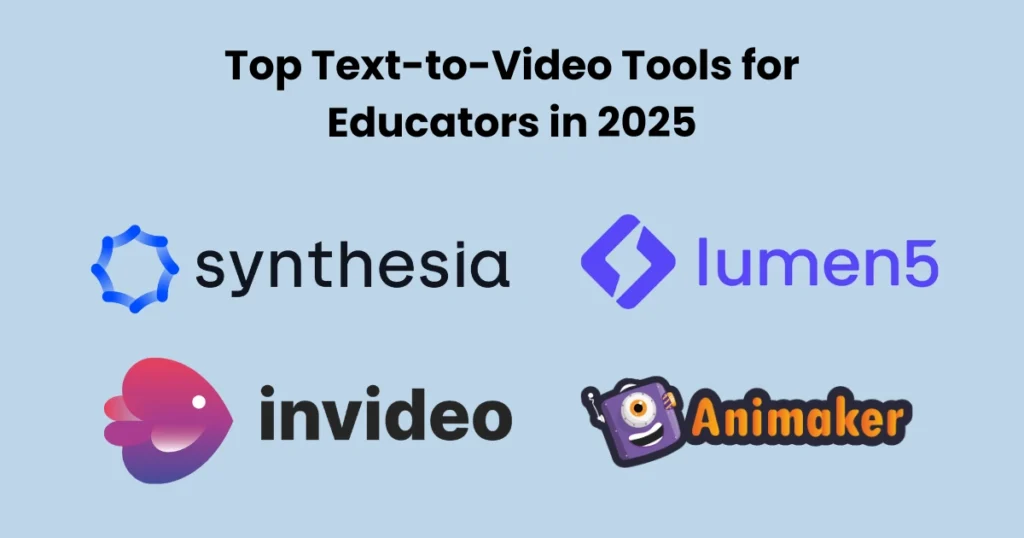
1. Synthesia
Synthesia is a leading text-to-video platform that uses AI to generate lifelike avatars and voiceovers. Educators can input lesson scripts, and Synthesia transforms them into professional videos with customizable avatars and languages. Its user-friendly interface makes it ideal for teachers with minimal technical expertise. Additionally, Synthesia supports multilingual content, perfect for diverse classrooms.
Key Features:
- AI-driven avatars for narration
- Support for over 120 languages
- Customizable templates for educational content
2. Animaker
Animaker offers a drag-and-drop interface, making it easy for educators to create animated videos from text. With a library of pre-designed templates, teachers can produce engaging explainer videos or storytelling content. Animaker’s affordability and extensive animation options make it a favorite for budget-conscious schools.
Key Features:
- Extensive library of characters and animations
- Voiceover and music integration
- Free and premium plans for schools
3. InVideo
InVideo simplifies video creation with its text-to-video editor, allowing educators to convert lesson notes into visually appealing content. It offers templates tailored for education, such as science explainers and historical timelines. InVideo’s cloud-based platform ensures accessibility, enabling teachers to collaborate and edit on the go.
Key Features:
- Pre-built educational templates
- Text-to-speech functionality
- Collaboration tools for team projects
4. Lumen5
Lumen5 uses AI to transform blog posts, scripts, or lesson plans into engaging videos. Its intuitive interface analyzes text and suggests visuals, music, and transitions to match the content. Educators can create professional videos without prior editing experience, making it ideal for quick classroom projects.
Key Features:
- AI-powered content matching
- Royalty-free media library
- Social media integration for sharing
How to Use Text to Video in the Classroom
Integrating text to video for educators into daily teaching requires strategic planning. Here are actionable ways to incorporate this technology effectively:
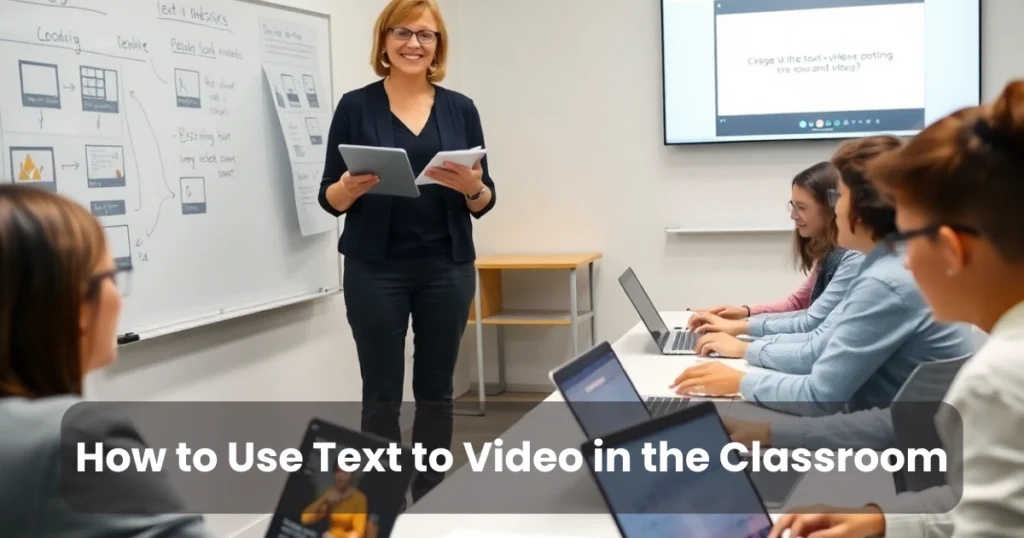
1. Flipped Classroom Models
In a flipped classroom, students watch video lessons at home and engage in hands-on activities during class. Teachers can use text-to-video tools to create concise, engaging videos from lesson scripts. For example, a math teacher can convert a geometry lesson into a 5-minute video with animations explaining angles and theorems, allowing students to review at their own pace.
2. Interactive Assignments
Text-to-video tools enable students to create their own videos as assignments. By converting research notes or essays into videos, students develop digital literacy and creative skills. For instance, a literature class might use Animaker to create animated summaries of novels, fostering collaboration and critical thinking.
3. Visual Summaries for Complex Topics
Complex subjects like biology or physics benefit from visual explanations. Teachers can use text-to-video platforms to break down intricate concepts into digestible visuals. A biology teacher, for example, could create a video illustrating the cell division process, enhancing student understanding through animations.
4. Language Learning Support
For language educators, text-to-video tools offer a dynamic way to teach vocabulary and grammar. Platforms like Synthesia can generate videos with native-speaking avatars, helping students practice pronunciation and listening skills. Subtitles and translations further support multilingual learners.
Benefits of Text to Video for Remote and Hybrid Learning
The rise of remote and hybrid learning has highlighted the need for flexible teaching tools. Text to video for educators offers unique advantages in these settings:
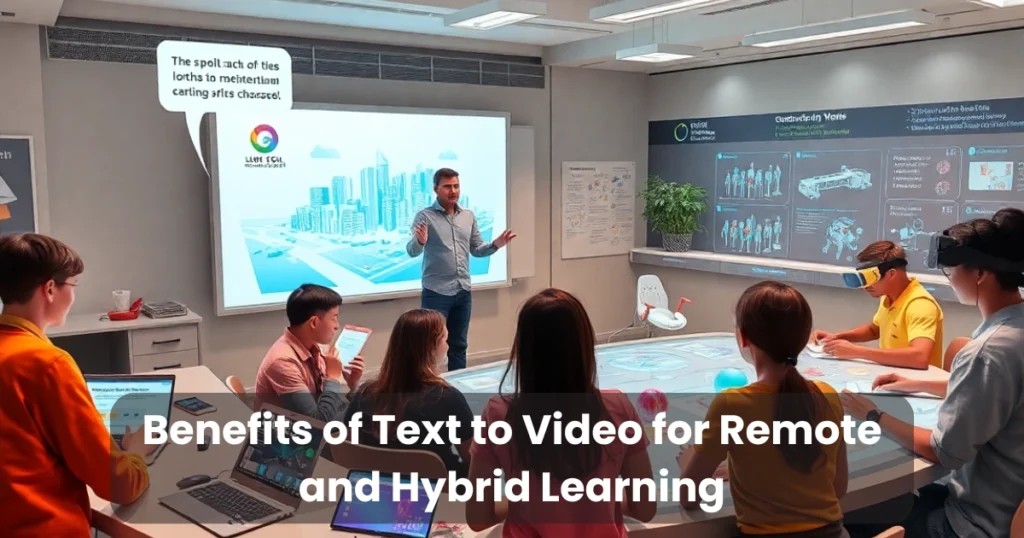
Accessibility and Flexibility
Videos created from text can be shared across platforms like Google Classroom or Zoom, ensuring students access content anytime, anywhere. This flexibility supports asynchronous learning, allowing students to engage with material at their convenience.
Consistency in Instruction
In hybrid settings, maintaining consistent instruction across in-person and remote students is challenging. Text-to-video tools ensure all students receive the same high-quality content, reducing disparities in learning experiences.
Engagement in Virtual Environments
Remote learning often struggles with student disengagement. Videos with dynamic visuals, voiceovers, and animations keep students focused, making virtual lessons as impactful as in-person ones.
Best Practices for Creating Effective Educational Videos
To maximize the impact of text-to-video content, educators should follow these best practices:
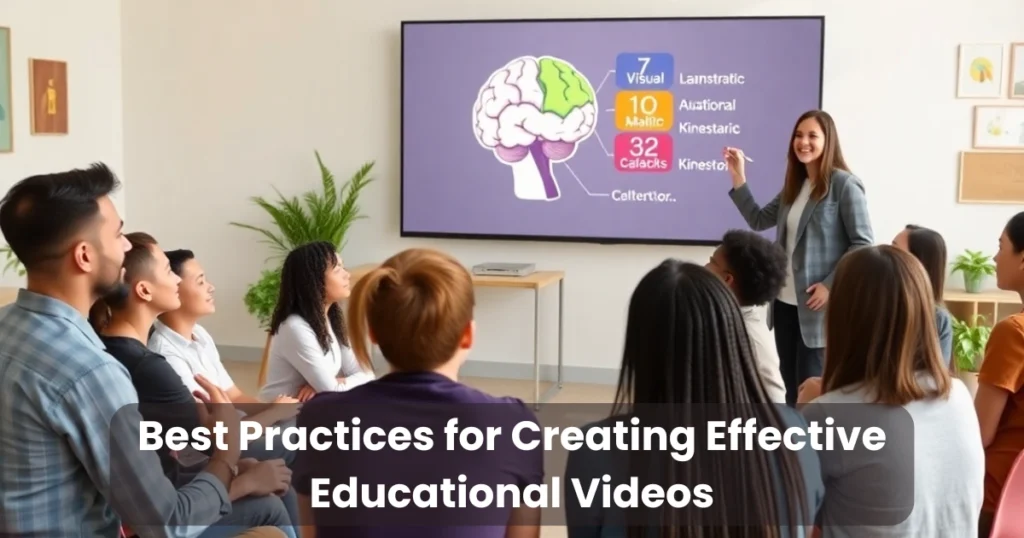
Keep Videos Short and Focused
Attention spans are limited, especially for younger learners. Aim for videos between 3-7 minutes, focusing on one key concept per video. For example, a science video on photosynthesis should cover the process succinctly, avoiding unrelated topics.
Use Clear and Conversational Language
Write scripts in an active, conversational tone to connect with students. Avoid jargon unless it’s essential, and explain technical terms clearly. For instance, when creating a video on ecosystems, define terms like “biodiversity” in simple language.
Incorporate Visuals and Audio Effectively
Balance visuals and audio to enhance understanding without overwhelming viewers. Use high-quality images, animations, and background music that complement the content. Tools like Lumen5 automatically suggest visuals that align with your text, simplifying this process.
Include Calls to Action
Encourage student interaction by ending videos with questions or prompts. For example, a history video might conclude with, “What do you think motivated ancient civilizations to build such grand structures?” This fosters critical thinking and engagement.
Challenges and Solutions in Adopting Text-to-Video Technology
While text to video for educators offers immense potential, challenges exist. Here’s how to address them:
Challenge: Limited Technical Skills
Solution: Choose user-friendly platforms like Animaker or Lumen5, which require no prior editing experience. Many platforms also offer tutorials and customer support to guide educators.
Challenge: Budget Constraints
Solution: Opt for free or low-cost tools like Animaker’s free plan or Lumen5’s basic version. Schools can also explore grants or educational discounts offered by platforms like Synthesia.
Challenge: Time Constraints
Solution: Use text-to-video tools with AI automation to reduce production time. Platforms like InVideo and Synthesia streamline workflows, allowing educators to create videos quickly.
Future Trends in Text to Video for Education
As technology evolves, text-to-video tools are poised to transform education further. Here are key trends to watch in 2025 and beyond:
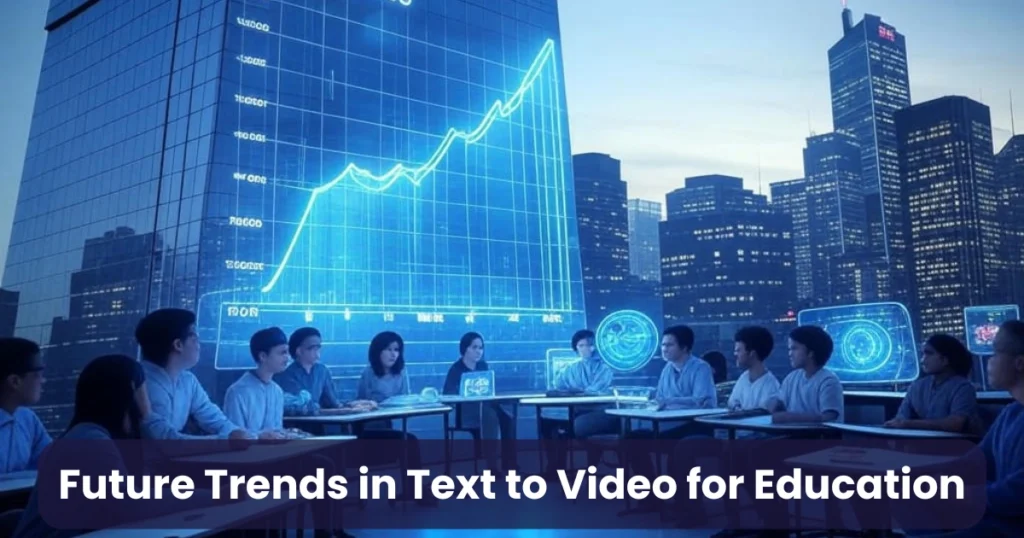
AI-Driven Personalization
AI advancements will enable text-to-video toolsSes to create personalized content based on student needs. For example, platforms might analyze student performance and generate tailored videos to address learning gaps.
Integration with Virtual Reality (VR)
Text-to-video tools are beginning to integrate with VR, creating immersive learning experiences. Imagine a history lesson where students “walk” through a virtual ancient city, narrated by an AI-generated video.
Enhanced Interactivity
Future tools will offer more interactive features, such as embedded quizzes or clickable elements within videos. This will make learning more engaging and allow teachers to assess comprehension in real time.
Case Studies: Text to Video in Action
Case Study 1: High School Science Class
A high school biology teacher used Synthesia to create a series of videos on genetics. By converting lesson notes into 5-minute videos with AI avatars, the teacher increased student engagement by 40%, as measured by class participation and quiz scores.
Case Study 2: Elementary Language Arts
An elementary teacher used Animaker to create animated story videos from students’ written drafts. The project not only improved students’ writing skills but also boosted confidence, as they saw their stories come to life.
Conclusion
Text to video for educators is a powerful tool that enhances engagement, supports diverse learners, and streamlines content creation. By leveraging platforms like Synthesia, Animaker, InVideo, and Lumen5, teachers can transform lessons into dynamic, accessible videos that resonate with students. As education continues to evolve, adopting text-to-video technology will ensure educators remain at the forefront of innovative teaching. Start exploring these tools today to create impactful, memorable learning experiences that inspire your students.


CG Pipeline Automation: Boost Efficiency in 2025
Updated on August 24, 2025
Read More